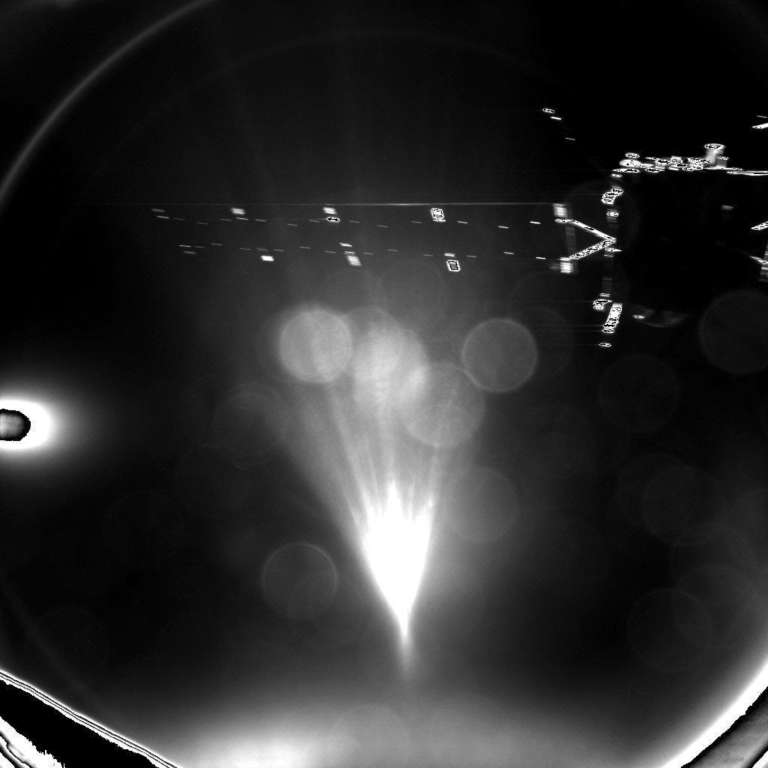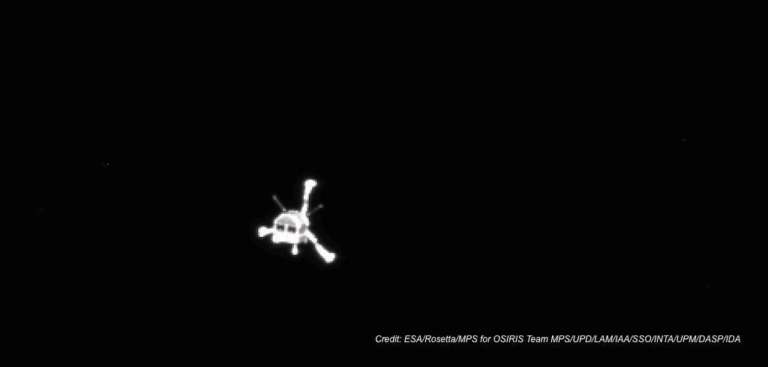Emily Lakdawalla • Nov 12, 2014
Philae update: Photo documentation of Philae's separation!
Here it is. We knew hours ago that Philae separation happened, but there's nothing like seeing a photo, seeing Philae's mothership receding into the distance.

And this photo is even better: a view from OSIRIS of the lander -- in all its glorious detail.

A lot has had to happen right in order for this image to get down to Earth. Philae separated from the orbiter on schedule at 8:35 spacecraft event time, and we received confirmation that it had happened on Earth right on time at 9:03 UTC, 28 minutes later. Just afterward, Rosetta fired engines to change its path around the comet from a near-collision course to its relay orbit, from which it will be able to monitor Philae while keeping in contact with Earth. As the lander ran through its post-separation timeline, Earth lost contact with Rosetta (as expected), and there was a two-hour window in which there was no news from either spacecraft.
Contact was expected to return at 10:53 UTC. But it didn't happen right away. It took nearly ten minutes, during which the people in mission control appeared increasingly concerned. At length, the signal did arrive, and they confirmed not only that Rosetta was talking to Earth but also that it was relaying telemetry from the lander. Within a few more minutes, we received confirmation that the landing gear had deployed, and several instruments have chimed in on Twitter to announce that they are gathering data.
So there is already science data on the ground from Philae. And no reason to expect that'll stop...at least up until the moment of landing. After that, it's impossible to predict, especially with the possible (though not certain) loss of the cold-gas jet system.
How will we know landing is successful? There are two main signals they are looking for. The first was initially to be the firing of the cold-gas jets, but now we're not sure if that will happen, so the first signal they are looking for is that the two harpoons have fired. That will indicate touchdown. But then we will have to wait several minutes as the harpoons retract and the lander determines that it is in a stable configuration. Only then will the lander team celebrate.
Stay tuned!
The Time is Now.
As a Planetary Defender, you’re part of our mission to decrease the risk of Earth being hit by an asteroid or comet.
Donate Today

 Explore Worlds
Explore Worlds Find Life
Find Life Defend Earth
Defend Earth

